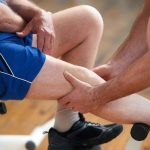-150x150.jpg)
Women fighting breast cancer can relieve some of their chemotherapy “brain fog” through aerobic exercise, a new clinical trial in Canada suggests. Breast cancer patients on chemo who participated in a regular aerobics class reported that they felt sharper and had better quality of life, researchers found. “Our findings strengthen the case for making exercise assessment, recommendation and referral a routine part of cancer care,” said lead researcher Jennifer Brunet, a professor of human kinetics with the University of Ottawa. “This may help empower women living with and beyond cancer to actively manage both their physical and mental health during and after treatment.” For the study, 57 breast cancer patients in Ottawa and Vancouver were randomly assigned to take either 12 weeks or 24 weeks of aerobic exercise along with their chemotherapy. About half of the women started their aerobics regimen at the same time they initiated chemo, and the other half started after they completed chemo. No significant differences between the two groups were found in objective tests of brain function. However, women who took part in aerobics during chemo reported that they felt like they had a clearer, sharper mind, and that their overall quality of life was better. The new study was published recently in the journal Cancer. The results show that more exercise options need to be made available to women… read on > read on >






































